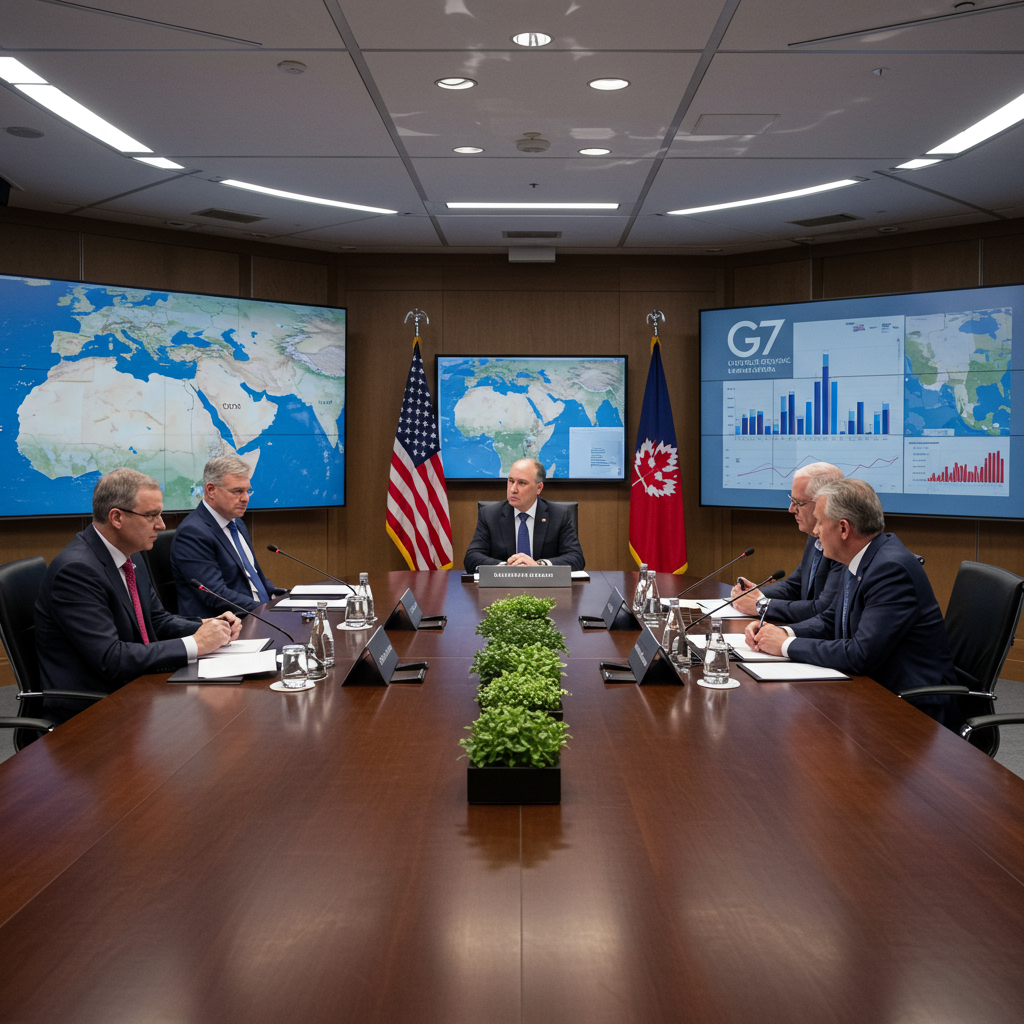High Stakes in Kananaskis: G7 Leaders Confront Middle East Crisis and Trump Uncertainty
The upcoming gathering of G7 leaders in Kananaskis, Alberta, from June 15 to 17 is poised to be dominated by urgent geopolitical crises, primarily the escalating tensions between Iran and Israel. Experts highlight that the unfolding situation in the Middle East, triggered by recent military exchanges, coupled with the unpredictable foreign policy of the United States under President Donald Trump, will likely overshadow other planned agenda items.
This critical summit takes place as Canada holds the G7 presidency, with Prime Minister Mark Carney hosting leaders from France, Germany, Italy, Japan, the United Kingdom, the United States, and representatives from the European Union. While host nations typically use the platform to showcase leadership and national priorities, the sudden intensification of the Iran-Israel conflict has dramatically shifted the focus.
The Escalating Middle East Flashpoint
The immediate catalyst for the G7’s altered agenda is the recent exchange of strikes between Israel and Iran. Following a significant Israeli military operation against sites in Iran, Tehran launched retaliatory attacks. While the U.S. stated it wasn’t involved in the initial Israeli strike, reports indicate Washington was informed in advance.
This sequence of events raises the specter of an all-out regional war. The G7, originally designed as a crisis response group capable of adapting quickly to international challenges, finds itself meeting at a crucial moment.
A significant concern tied to this escalation is the potential for disruption in the Strait of Hormuz. This narrow waterway is the sole marine passage out of the Persian Gulf and is bordered by Iran, Oman, and the UAE. It is the world’s most critical oil transit chokepoint, with roughly 20% of global oil consumption passing through it. Reports citing Iranian lawmakers suggest Iran could consider closing the Strait, a move that would cause global oil prices to soar and trigger severe international economic repercussions, with no viable alternative sea route for Gulf cargo. Such an action would almost certainly provoke a strong military response, particularly from the United States, adding another layer of risk to the already volatile situation.
The Unpredictable Trump Factor
Adding immense complexity to the discussions is the expected presence of U.S. President Donald Trump. Trump’s approach to international forums, characterized by experts as “emotional and performative,” creates significant uncertainty about the summit’s dynamics and potential outcomes.
Memories of the 2018 G7 summit, also hosted by Canada, loom large. Following that meeting, Trump famously withdrew his endorsement of the joint communique and publicly criticized then-Prime Minister Justin Trudeau. This history underscores the challenges leaders face in navigating discussions with a U.S. president known for breaking with diplomatic norms.
Reflecting existing differences among G7 members, a traditional joint communique showing unified consensus is not anticipated this year. Instead, Prime Minister Carney is expected to issue a “chair’s summary” at the conclusion of the three days, reflecting the breadth of discussions rather than a jointly signed statement.
Recent international diplomacy highlights Trump’s direct engagement with the crisis. In a recent phone call with Russian President Vladimir Putin, both leaders discussed the “dangerous escalation” in the Middle East. Putin briefed Trump on his talks with leaders in Iran and Israel, reiterating Russia’s offer to mediate on the Iranian nuclear issue. Trump reportedly acknowledged the “effectiveness” of Israel’s strikes, and the two leaders did not rule out a return to nuclear negotiations. Their call also touched on the Ukraine conflict, where their differing interests (Russia’s negotiation readiness vs. Trump’s desire for a “speedy end”) were apparent, hinting at another potential point of friction at the G7.
Canada’s Balancing Act and Shifting Priorities
Canada hosts this G7 at what has been described as a “hinge moment” for the 51-year-old grouping, marked by significant economic and geopolitical shifts. These include lingering trade tensions, partly stemming from Trump’s past use of tariffs, and a fundamental alteration in the global order due to the United States’ changing role and perceived disregard for traditional alliances.
Prime Minister Carney’s government has been framing Canada’s foreign and defence policy as a necessary response to this new reality and US unpredictability. Described as a “harder-nosed foreign policy” involving a “Big Hedge” against potential U.S. influence shifts, Canada aims to strengthen its own defence capabilities, build a domestic industry, and aggressively cultivate relationships beyond its traditional allies. Hosting the G7 is seen as a crucial test for Carney to navigate between Trump and other allies, preventing further fragmentation.
While Carney had announced priorities focused on strengthening global peace and security (including countering foreign interference and improving wildfire response) and spurring economic growth (via energy security and public-private partnerships), the Middle East crisis will now dominate discussions. Planned talks on conflicts like Russia-Ukraine and Israel’s war on Gaza will likely pivot sharply to Iran. Other leaders are expected to press Trump on past negotiations and de-escalation efforts regarding Israel.
Carney’s pragmatic approach is also evident in Canada’s invitation list for outreach sessions, which includes countries like India and Saudi Arabia. Inviting India, despite recent diplomatic tensions following the 2023 killing of a Sikh leader on Canadian soil, signals Canada’s awareness that making progress on its agenda requires working with countries despite disagreements, prioritizing the “big picture” of global and economic affairs. This pragmatic, realist stance positions Carney potentially as a “bridge builder” in a complex multilateral system.
Despite the overwhelming focus on the Middle East crisis and Trump’s unpredictability, the summit remains an opportunity for Canada and Prime Minister Carney to engage global leaders and articulate a strategy for navigating a complex world.
The dynamic between other leaders and Trump will be closely watched, determining whether the approach is one of deference or standing firm. The expected presence of Ukrainian President Volodymyr Zelenskyy adds another layer of potential tension, particularly given past public exchanges between Trump and Zelenskyy.
Ultimately, the G7 summit in Kananaskis is set against a backdrop of severe international pressure. While Canada seeks to advance its own strategic priorities, the immediate necessity of addressing the Iran-Israel crisis and managing the uncertainties presented by President Trump will define this critical meeting.



